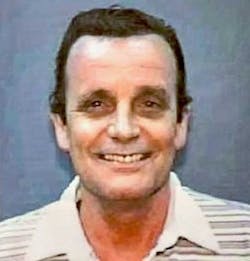How to Catch A Criminal : Time and Progress Help Solve Case
Every officer with a decent amount of time on the job knows the unexpected turns an investigation can take. Seeing a major case through to completion often involves giving up on a theory and taking your investigation in a different direction as new information becomes available. In How to Catch A Criminal, we look at the many ways not-so-perfect crimes are solved. This month, after decades of waiting, questions receive bittersweet answers.
They say time heals all wounds. Be they physical injuries like a broken leg or a dog bite, or the intangible pains that make us human, like a breakup, or a death in the family, it’ll all get better eventually. Luckily, thanks to advancing techniques in the world of forensic science, time has begun working its healing magic on cold cases as well. With fingerprint databases expanding and more matches being found, as well as lesser amounts of DNA being necessary for testing purposes, homicides which were once cold, are being solved. Often, the key to identifying a suspect is held in evidence that was previously collected. Due to these scientific advancements, distraught families are receiving closure and relentless investigators are finding the answers they have spent countless hours searching for.
This article appeared in the March/April issue of OFFICER Magazine. Click Here to subscribe to OFFICER Magazine.
On Sunday, Oct. 25, 1970, Nancy Bennallack returned to her Sacramento, California, apartment late in the evening. The 28-year-old woman was a court reporter and was due back at work Monday morning. After she and her fiancé called it a night, he left and Nancy prepared for bed. On the 26th, Nancy failed to arrive at the courthouse. Out of concern for Nancy, one of her co-worker’s sons was asked to go to her apartment to make sure she was okay. The son didn’t have any luck contacting Nancy until he explained the situation to the apartment complex manager. Using a master key, the co-worker’s son and the manager entered the apartment and saw the worst possible explanation for Nancy missing work.
Nancy’s body was found in her bedroom, stabbed over 30 times. The repeated stabbing was so brutal, it nearly resulted in her decapitation. She had clearly been murdered, and police were called to the scene. They learned her fiancé left Nancy’s apartment, where she lived alone, around 11:30 on the night of the 25th. Her body was found early the next morning, with no signs of forcible entry into the home. Nancy often left her balcony door ajar, so her cat could come and go. This door was the most likely entry point for the killer. Unfortunately, neither the door nor any other surface in the apartment displayed any fingerprint evidence, indicating the killer knew to cover their fingers.
Whether he wore gloves, or wrapped his fingertips in masking tape, as police theorized at the time, the killer was unable to keep from cutting himself during the stabbing. Defensive wounds on Nancy’s hands indicated she fought as hard as she could to stop the knife from being thrust into her. This struggle likely resulted in a cut on the killer’s hand or arm. A trail of blood ran from Nancy’s balcony, down to the street below, and to the parking lot, where it ended, meaning the killer left the area in a vehicle from there, with the knife still in his possession.
The investigation produced 500 potential suspects who were interviewed in the month following Nancy’s murder. Each person interviewed was eliminated, or at the very least had an alibi for the early morning of Oct. 26. Despite the blood trail at the scene, detectives at the time were no closer to identifying a suspect, because DNA testing would not be used for forensic purposes until the mid 1980s. Luckily, the blood evidence was collected, but the case of Nancy Bennallack’s murder soon came to a standstill.
In 2004, DNA testing had advanced greatly and CODIS, the Combined DNA Index System, had been around for several years. By that point, allowing local, state, and federal agencies to share their DNA databases, greatly increasing the likelihood of suspect identification. Sacramento detectives ran a sample of the blood found at the scene through CODIS and were able to create a DNA profile confirming the suspect was a male. However, there was not a match in CODIS for this profile. The profile remained in CODIS, but a matching sample was never submitted from any other cases that would identify the person who killed Nancy. The blood was also run through California’s DOJ Familial Search several times over the next decade and a half, but alas, still no results.
In November 2019, investigators attempted to find a DNA match for the killer’s blood once more, this time using the relatively new science of genetic genealogy. This method of testing broadens the results by matching the DNA profile submitted to potential relatives of the person the sample came from. From there, investigators can map out the family tree and narrow down what member of that family is the suspect they’ve been looking for. In this instance, the blood from the scene produced results that detectives could sink their teeth into.
The next two years were spent looking into relatives of the killer, crossing them off the suspect list, and in one case, obtaining a DNA sample from one relative who provided it willingly in order to help close the case. That sample, along with the narrow list of possible killers, led to a positive identification in July 2022. After 52 years, Nancy Bennallack’s murder was solved, and the killer identified as Richard John Davis, Nancy’s neighbor. Davis was actually interviewed in the initial investigation, but his roommate vouched for his whereabouts on the early morning of October 26th, 1970. Davis did not have a history of violent crimes, his worst offense prior to the night of the murder was driving drunk. Davis’ issues with drinking continued to plague him until 1997, when he died in his 50s due to complications from alcoholism.
Sadly, with Richard Davis passing before he was identified as the killer, his motive died as well. Other than proximity, it is not known why Nancy was chosen to be his only known victim. His premature death also kept him from standing trial for the murder, further depriving the Bennallack family from the justice they sought for more than five decades. In the end, thanks to scientific advancements and diligent investigation, time healed yet another wound.
About the Author
Brendan Rodela is a Deputy for the Lincoln County (NM) Sheriff’s Office. He holds a degree in Criminal Justice and is a certified instructor with specialized training in Domestic Violence and Interactions with Persons with Mental Impairments.
About the Author

Officer Brendan Rodela, Contributing Editor
Brendan Rodela is a Sergeant for the Lincoln County (NM) Sheriff's Office. He holds a degree in Criminal Justice and is a certified instructor with specialized training in Domestic Violence and Interactions with Persons with Mental Impairments.

